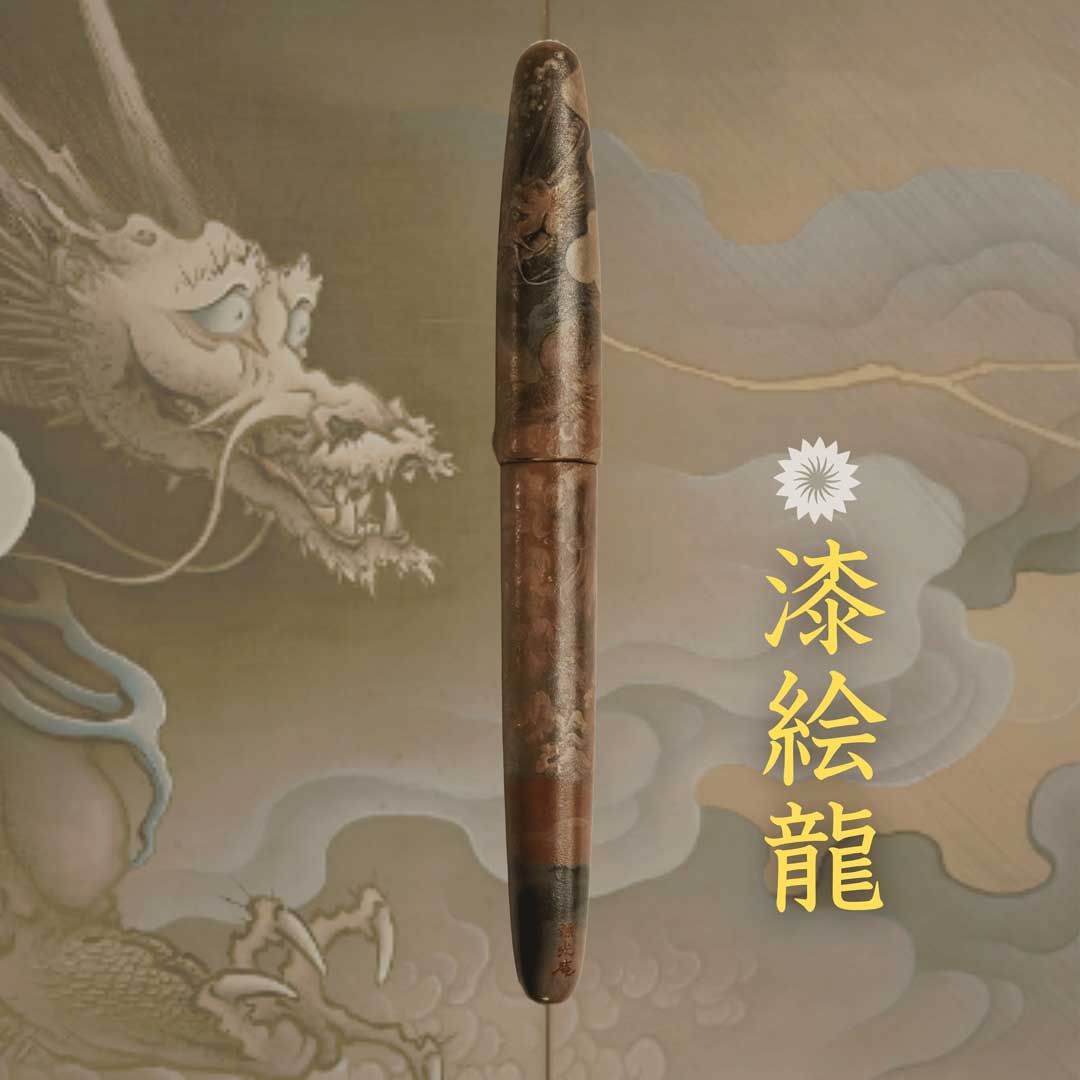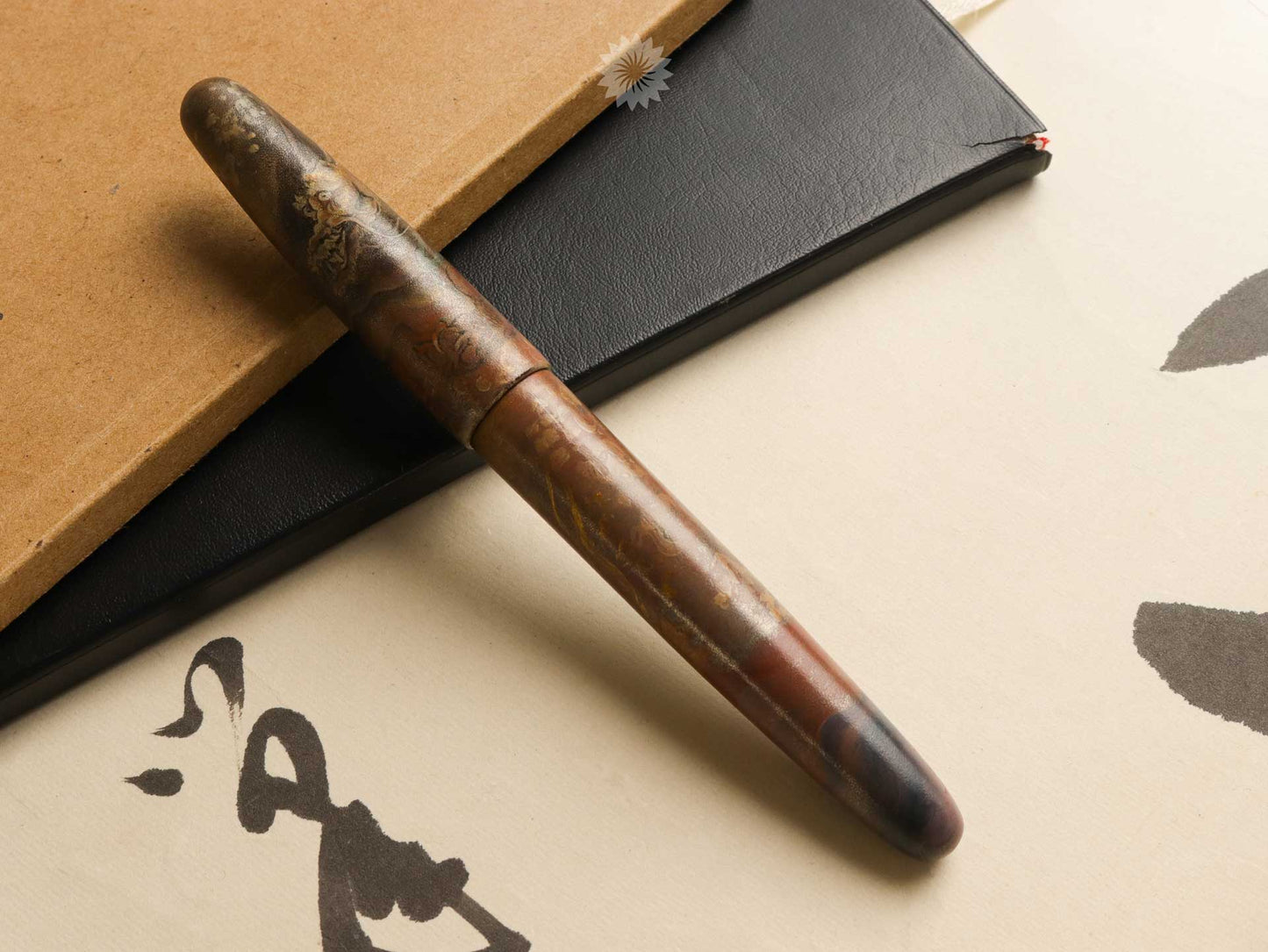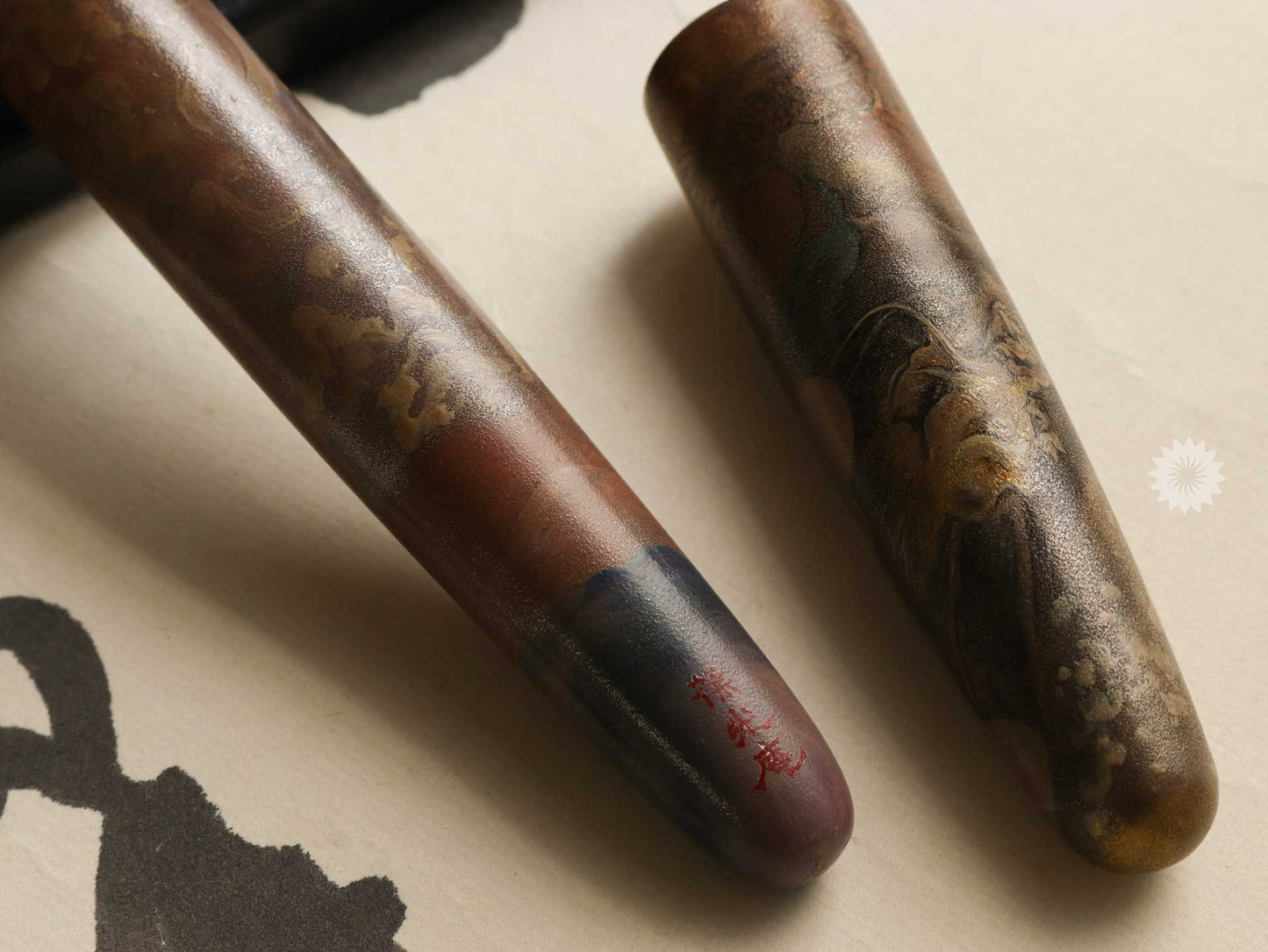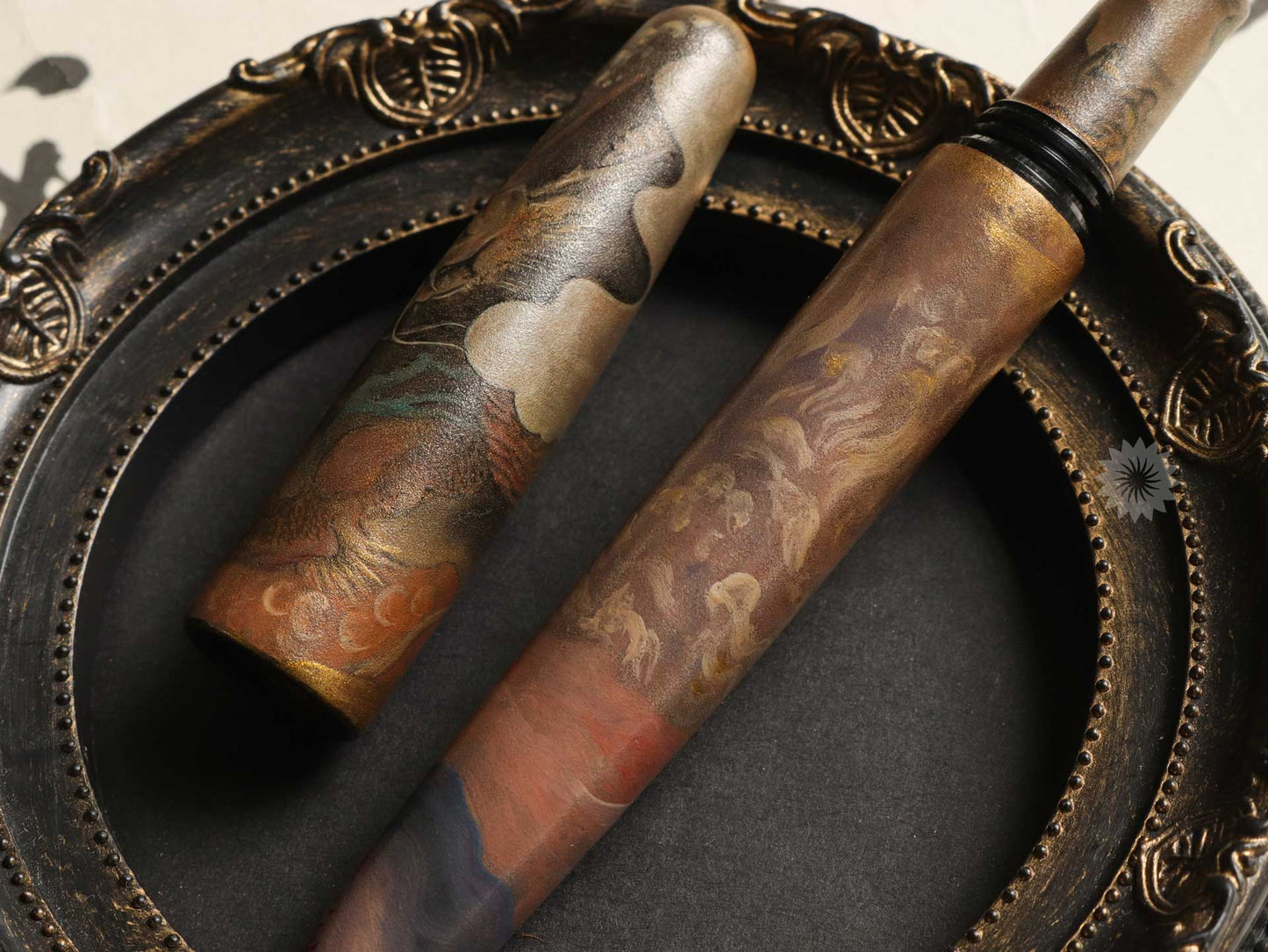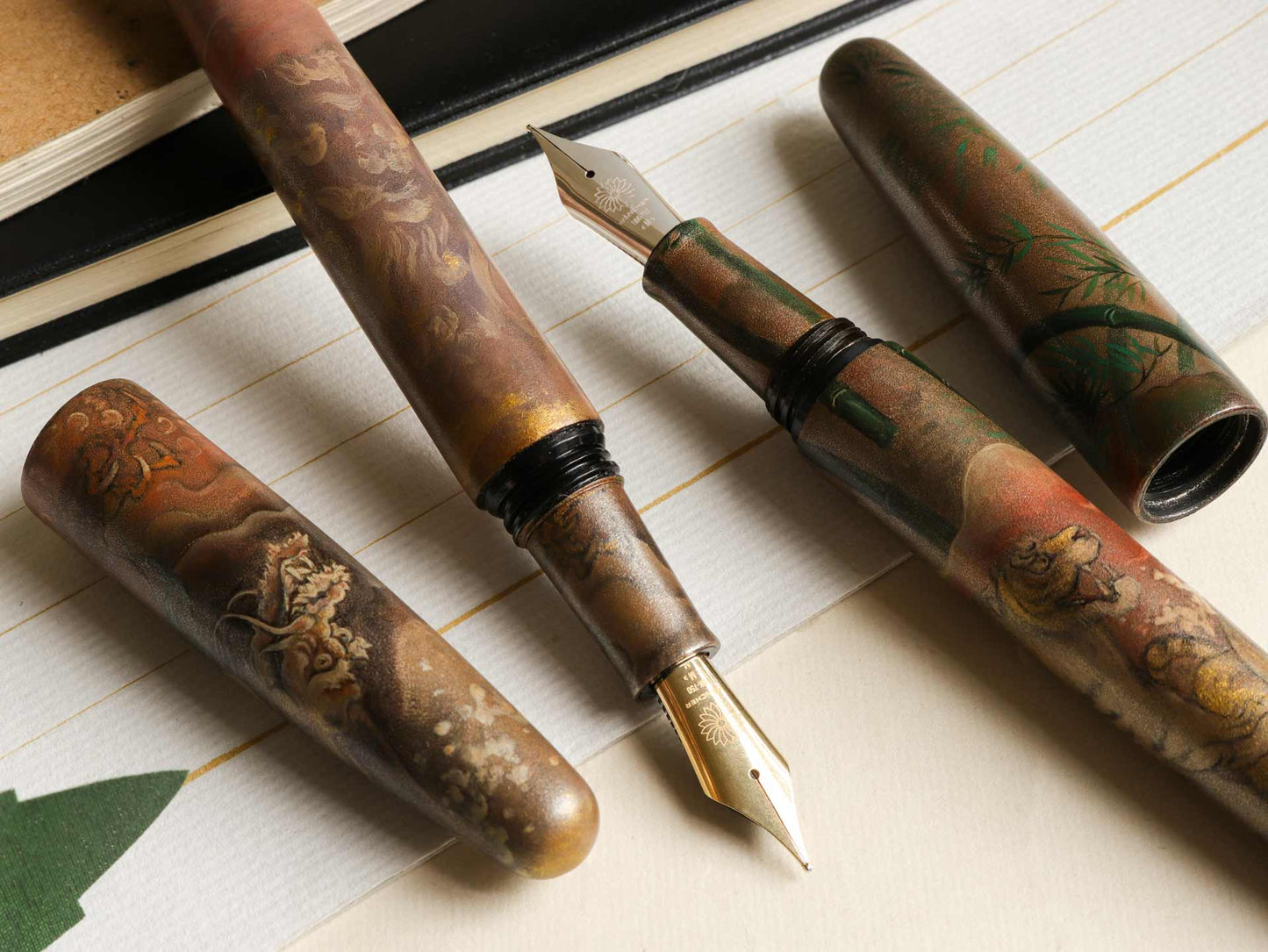Dream Pen Urushi-e: Dragon
Dream Pen Urushi-e: Dragon
Couldn't load pickup availability
Description
Description
A Hybrid Worldview
There are many masterpieces in the history of Japanese art, and learning about the stories behind each work will deepen your interest. In an effort to share these layered stories with the rest of the world, Wancher is unveiling the Urushi-e collection, which is a highly specialized technique that combines traditional ink painting and detailed Urushi craftwork.
Urushi-e (Lacquer Painting)
Maki-e is a technique that involves painting with translucent lacquer and sprinkling colored powder, such as gold or silver powder, to make the pattern stand out. On the other hand, the "Urushi-e" is a technique that requires a high level of skill as the designs become more delicate, in which pigments are mixed with lacquer.
Design Inspiration
For thousands of years, dragons and tigers have been symbols of power, wisdom, strength, and in the case of the former, myth. The Dragon and the Tiger belong to the twelve Zodiac Signs of East Asian cultures, which indicates their significance as symbols within the Asian cultures that comprise this region.
It is unsurprising then that even as recent as the Meiji Period (1868-1912), Japanese artists still used these iconic creatures in their artwork. The new Urushi-e - Dragon and Tiger is inspired by the Rokkyoku Issou Ryu-Tora-zu Folding Screen. While the original artwork took advantage of its foldable nature by imbuing each panel with a complex and beautiful design, the Urushi-e: Dragon and Urushi-e: Tiger adapts this concept and molds it to the cylindrical shape of our iconic Dream Pen.
As a way of portraying the difference in roles of the Dragon and the Tiger within the Zodiac, the Urushi-e: Dragon depicts the Dragon as a divine creature from the Heavens, while the Urushi-e: Tiger depicts this powerful creature among a bamboo forest on the ground.
Dragon
The Western depiction of a dragon is fearsome, vicious, and monstrous. In their fairy tales, the dragon must be slayed by the knight before he can rescue the Princess. In Eastern mythology, however, the Dragon is, above all else, a wise and benevolent divine creature. Instead of possessing animalistic traits, the Dragon is often wiser than mankind, and its symbol is not treated with fear; instead, it is seen as a sign of good luck and fortune.
The divinity of the Dragon is further emphasized in the Urushi-e: Dragon, as the Dragon is depicted to be afloat a cloud from the Heavens on the cap of the fountain pen, looking down on the earthbound creatures ambivalently. The rest of the pen is enveloped with deep, smoky colors of red, orange, gold, and shadow using the renowned Urushi-e technique.
History of Japanese painting
The specific ink painting style that inspired this collection originated in China before being introduced to Japan in the late 12th Century by traveling Zen monks. While Japan had its ink-based art prior to this, it was considered juvenile in comparison to the much more detailed and complex artwork hailing from China. This sparked an evolution in Japanese art, forming the foundation of what would be a golden period in Japan's art history.
18K Nib
All Urushi-e pens come with an 18K gold nib to enhance your writing experience and the astonishing appearance of the traditional Maki-e art on this pen.
Natural Raw Urushi
All fountain pens in this series are applied using natural Urushi which by characteristic has slightly less shine. Every early summer, raw Urushi is gathered from the deciduous tree known as "Urushinoki". This valuable plant yields only about 100-300 grams of raw Urushi liquid per year from each tree.
Shape & Measurement

Specifications
Material: Ebonite
Art: Urushi-e
Filling mechanism: Converter or Cartridge (European International Standard)
Nib: #6 Wancher 18K gold & Rhodium-plated
Feed: Plastic only
Packaging
Traditional Japanese Wooden Box + Pen Kimono + Instructional Materials + Converter + Cartridge
Duties & Taxes
Duties & Taxes
For international orders, customers are responsible for any sales tax, duties, brokerage fees, and / or other taxes imposed by the government of the destination country, in addition to the quoted or invoiced price.
Learn about Wancher's terms of service for our premium fountain pens and writing instruments. Find important information on purchases, warranties, and customer rights. Essential reading for all Wancher pen enthusiasts and collectors.Share
